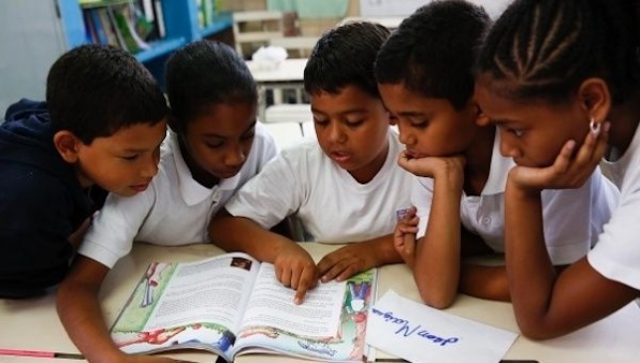SAN FRANCISCO, CALIFORNIA | A new study indicates that children as young as 4 years old, under certain conditions, can discern misleading but technically accurate information, shedding new light on how young children learn and how they judge their teachers.
Published this week in Child Development, the study’s focus was not to determine if young children could detect dishonesty or falsehood. The question, said Hyowon Gweon, assistant professor of psychology at Stanford University and the study’s lead author, was whether young children could discern “sins of omission,” namely technically accurate, but misleading information.
“That children become sensitive to the quality of their informants bodes well for their future learning,” said Gweon. “We, as adults, frequently omit information to children when something is unnecessary, redundant, too hard, and even when we want them to know ‘the truth, but not the whole truth.’ Because omission can either be useful or misleading depending on the context, parents and educators should be mindful of children’s sensitivity to ‘informativeness’ and understand when omitting information is helpful and when it can be a ‘sin.'”
The study included four experiments, beginning with children age 6 and 7. Participants first learned about two toys: one had only one function while the other had four functions. They then viewed corresponding videos with puppets demonstrating those toys’ functions to Elmo, the Sesame Street character.
The key was that both “puppet teachers” demonstrated only one of the toy’s functions, making one teacher fully informative by showing one function of a single-function toy and the other under-informative by demonstrating one of four functions. The under-informative puppet technically did not lie; it just did not show the additional three functions.
The children were then asked to rate the puppet teachers based on how helpful they were to Elmo and how good a job they did teaching him.
Gweon and her colleagues, including psychology graduate student and co-author of the study Mika Asaba, found that the 6- and 7-year-olds gave lower ratings to the under-informative teacher. The effect on the children was the same regardless of which video, informative or under-informative, they viewed first.
But the order made a difference when Gweon conducted the same experiment on 4- and 5-year-olds. Only the children who viewed the informative teacher first noticed the under-informative teacher’s sins of omission. Further experiments ruled out alternative explanations, showing that “younger children (4-5 years old) are limited in evaluating teachers when they do not have a good comparison in mind,” Gweon said.
So why was the order, informative before under-informative, such a necessary element for 4-and 5-year-olds to tell the difference? One possibility is that viewing the informative teacher first sets a standard that the under-informative teacher must reach.
In the study’s final experiment, testing only 4-year-olds, participants were asked to rate the teachers after viewing them back-to-back, not as in the earlier experiments where the teachers were rated in separate trials. In this context, 72 percent of children preferred the informative teacher regardless of the order they were viewed.
“We had previously shown the results in older children. If this study had been conducted in the same way — asking separate groups of children to rate each teacher — one might have concluded that the 4- and 5-year-olds do not have this ability yet,” Gweon was quoted as saying in a news release. “But by asking children to evaluate two teachers in sequence, we were able to find this limited, yet remarkable ability in young children.”
Children’s ability to recognize that subtlety is important because “it is critical for young learners to decide whom to approach and trust for information, and whom to avoid or discredit,” the researchers wrote in the study.










